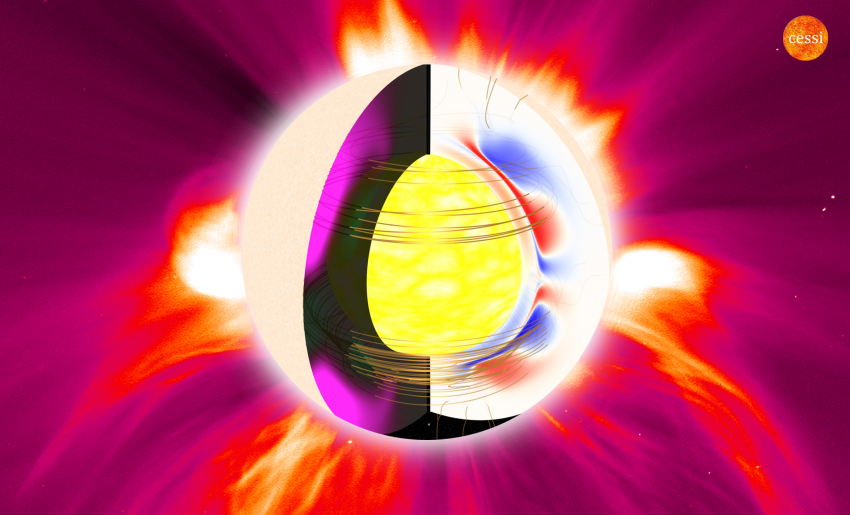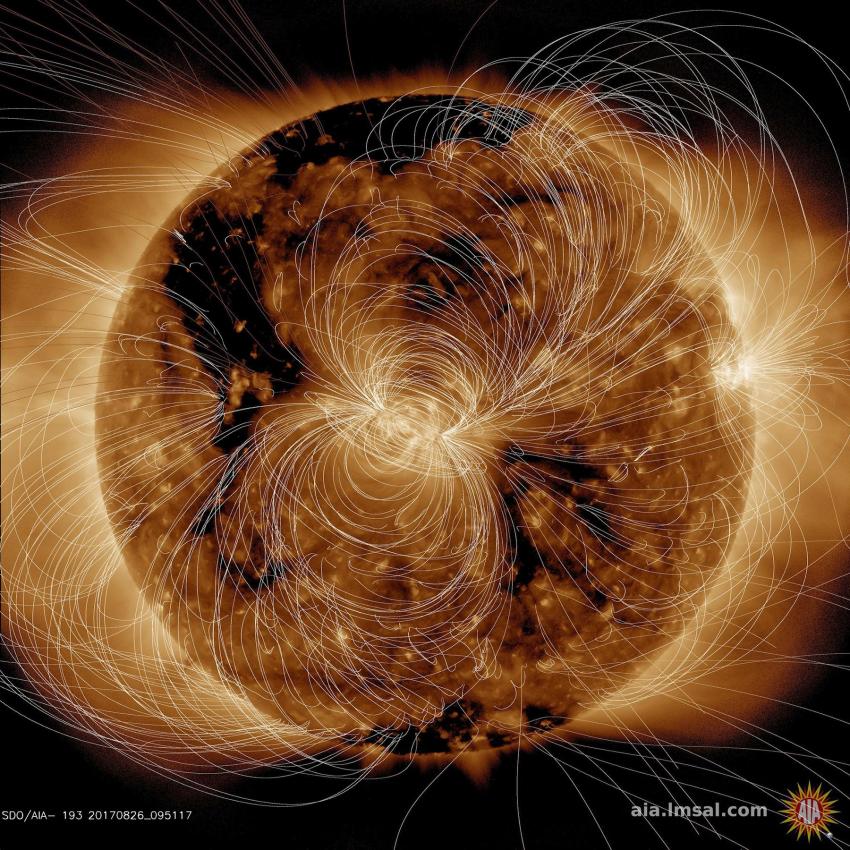Middle-aged stars can experience their own kind of midlife crisis, experiencing dramatic breaks in their activity and rotation rates at about the same age as our Sun, according to new research published today in Monthly Notices of the Royal Astronomical Society: Letters. The study provides a new theoretical underpinning for the unexplained breakdown of established techniques for measuring ages of stars past their middle age, and the transition of solar-like stars to a magnetically inactive future.
Astronomers have long known that stars experience a process known as ‘magnetic braking’: a steady stream of charged particles, known as the solar wind, escapes from the star over time, carrying away small amounts of the star’s angular momentum. This slow drain causes stars like our Sun to gradually slow down their rotation over billions of years.
In turn, the slower rotation leads to altered magnetic fields and less stellar activity - the numbers of sunspots, flares, outbursts, and similar phenomena in the atmospheres of stars, which are intrinsically linked to the strengths of their magnetic fields.
This decrease in activity and rotation rate over time is expected to be smooth and predictable because of the gradual loss of angular momentum. The idea gave birth to the tool known as ‘stellar gyrochronology’, which has been widely used over the past two decades to estimate the age of a star from its rotation period.
However recent observations indicate that this intimate relationship breaks down around middle age. The new work, carried out by Bindesh Tripathi, Prof. Dibyendu Nandy, and Prof. Soumitro Banerjee at the Indian Institute of Science Education and Research (IISER) Kolkata, India, provides a novel explanation for this mysterious ailment.
Using dynamo models of magnetic field generation in stars, the team show that at about the age of the Sun the magnetic field generation mechanism of stars suddenly becomes sub-critical or less efficient. This allows stars to exist in two distinct activity states – a low activity mode and an active mode. A middle aged star like the Sun can often switch to the low activity mode resulting in drastically reduced angular momentum losses by magnetized stellar winds.
Prof. Nandy comments: “This hypothesis of sub-critical magnetic dynamos of solar-like stars provides a self-consistent, unifying physical basis for a diversity of solar-stellar phenomena, such as why stars beyond their midlife do not spin down as fast as in their youth, the breakdown of stellar gyrochronology relations, and recent findings suggesting that the Sun may be transitioning to a magnetically inactive future.”
The new work provides key insights into the existence of low activity episodes in the recent history of the Sun known as grand minima – when hardly any sunspots are seen. The best known of these is perhaps the Maunder Minimum around 1645 to 1715, when very few sunspots were observed.
The team hope that it will also shed light on recent observations indicating that the Sun is comparatively inactive, with crucial implications for the potential long-term future of our own stellar neighbour.
Media contacts
Dr Robert Massey
Royal Astronomical Society
Mob: +44 (0)7802 877 699
press@ras.ac.uk
Dr Morgan Hollis
Royal Astronomical Society
Mob: +44 (0)7802 877 700
press@ras.ac.uk
Science contacts
Prof. Dibyendu Nandy
Center of Excellence in Space Sciences India & Department of Physical Sciences
Indian Institute of Science Education and Research (IISER) Kolkata
Tel: (+91) 9748 606 215
dnandi@iiserkol.ac.in
Bindesh Tripathi
Graduate Research Assistant, Plasma Physics
University of Wisconsin-Madison
Tel: (+1) 6086 402 059
btripathi@wisc.edu
Images and captions
Further information
The new work appears in, “Stellar Mid-life Crisis: Subcritical Magnetic Dynamos of Solar-like Stars and the Break-down of Gyrochronology”, B. Tripathi, D. Nandy, S. Banerjee, Monthly Notices of the Royal Astronomical Society: Letters (2021), in press (DOI: 10.1093/mnrasl/slab035).
Notes for editors
The Royal Astronomical Society (RAS), founded in 1820, encourages and promotes the study of astronomy, solar-system science, geophysics and closely related branches of science. The RAS organises scientific meetings, publishes international research and review journals, recognises outstanding achievements by the award of medals and prizes, maintains an extensive library, supports education through grants and outreach activities and represents UK astronomy nationally and internationally. Its more than 4,000 members (Fellows), a third based overseas, include scientific researchers in universities, observatories and laboratories as well as historians of astronomy and others.
The RAS accepts papers for its journals based on the principle of peer review, in which fellow experts on the editorial boards accept the paper as worth considering. The Society issues press releases based on a similar principle, but the organisations and scientists concerned have overall responsibility for their content.
Follow the RAS on Twitter, Facebook, Instagram and YouTube
Download the RAS Supermassive podcast




